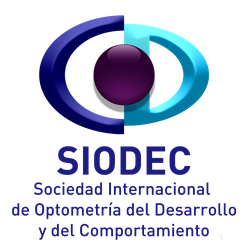
Vassilis Kokotas, optometrist and guest speaker at the IX SIODERV Congress, shares in this interview his perspective on the clinical use of yoked prisms. He reflects on his professional journey, the model he developed for prescribing them, and the importance of having a solid theoretical foundation when working with such powerful tools. An insightful conversation about science, clinical practice, and professional evolution.
Why do you find visual perception so interesting?
Visual perception reflects our personal truth about how we experience the world we live in. It combines incoming information from our senses enriched by our expectations and previous experiences with knowledge, intention and emotions. In the same way, it is fascinating to explore how this subjective internal representation can be shaped and formed with the use of lenses, prisms, filters and communication.
Why is it important for an optometrist to have a clinical model when using a tool such as prisms?
Prisms are just one of the tools we have to alter people’s vision. Every tool is characterized by some basic principles but the scope and the intention for using it depends on what we know about the potential use. When you are given a scissor, you can do so many things with it: cut a piece of paper to create art, cut a clothe to create fashion, cut a rope that holds things together, etc. So, now, consider the different use of a prism: it can support binocularity, alter body posture, expand peripheral awareness, shift egocentric localization, etc. You need to have a solid base of knowledge about the tool and a model that will guide you through developmental perspectives and effective management I order to use it.
"You need to have a solid base of knowledge about the tool and a model that will guide you through developmental perspectives and effective management I order to use it."
What led you to develop this clinical model for prescribing yoked prisms, and what specific benefits have you observed in your patients?
At the beginning of my professional journey, I was exposed to the “magic” power of yoked prisms. As it was expected, I got enthusiastic and wanted to know how to apply them. But the more I was reading, the more I was getting frustrated. I could be successful with their application sometimes, but there was something missing because in other cases the results were unpredictable and unstable… I even decided to do my research thesis on the yoked prisms and I did come up with some interesting results. Those results triggered my way of thinking about yoked prisms and resulted in my personal approach for using them.
During your lecture, will you address how visual health professionals can integrate this model into their daily practice?
Absolutely! That’s the purpose of this lecture. I want to analyze and explain when to use them, how they work and why do they work, based on my personal experience and model for prescribing them.
What do you hope attendees will take away from your conference?
First, I would like to see them understanding the basic principles and guidelines for using such a powerful tool the very next day, but also, I would like to see them getting inspired and go even further to other potential areas of using them.
What does SIODERV mean to you in terms of research? What potential do you see?
I believe that SIODERV is a meeting point where many different approaches in the practice of behavioral, developmental and neuro optometry converge. At this point of convergence and empowerment is where I also see the potential for new emerging concepts to be introduced to the clinicians and other visual scientists. We need to become aware of who we are as a profession and expand our fields of practice. This is what SIODERV means to me!
